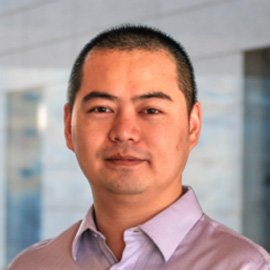2023-2024 Fesler Lampert Chair in Aging Studies: Xiao Dong, PhD
 I am a tenure-track assistant professor in the Institute of the Biology of Aging and Metabolism (iBAM), and the Department of Genetics, Cell Biology and Development (GCD). I obtained my PhD degree in bioinformatics at the Chinese Academy of Sciences in 2013. During PhD training, I developed and applied computational algorithms and databases to study the genetics of age-related diseases in humans. From 2013 to 2021, I received postdoctoral training at the Albert Einstein College of Medicine, and focused on developing single-cell sequencing methods to analyze DNA mutations and epigenetic aberrations in somatic tissues with age. In 2021, I started my laboratory in the iBAM and GCD at the University of Minnesota. My long-term goal is to discover the causal mechanisms of human aging. Currently, my research focuses on the somatic mutation theory of aging and testing the theory by developing and applying single-cell multi-omics technologies and machine learning algorithms.
I am a tenure-track assistant professor in the Institute of the Biology of Aging and Metabolism (iBAM), and the Department of Genetics, Cell Biology and Development (GCD). I obtained my PhD degree in bioinformatics at the Chinese Academy of Sciences in 2013. During PhD training, I developed and applied computational algorithms and databases to study the genetics of age-related diseases in humans. From 2013 to 2021, I received postdoctoral training at the Albert Einstein College of Medicine, and focused on developing single-cell sequencing methods to analyze DNA mutations and epigenetic aberrations in somatic tissues with age. In 2021, I started my laboratory in the iBAM and GCD at the University of Minnesota. My long-term goal is to discover the causal mechanisms of human aging. Currently, my research focuses on the somatic mutation theory of aging and testing the theory by developing and applying single-cell multi-omics technologies and machine learning algorithms.
What led you to apply to the Fesler-Lampert Chair?
The Fesler-Lampert Chair in Aging Studies aims to enhance the research and career development of faculty members in the field of aging science, which is exactly the research field that I am in. The biology of aging is comprehensive, and as proposed recently, aging is characterized by twelve hallmarks including genomic instability, and cellular senescence. The Fesler-Lampert Chair will provide me an opportunity to expand my research to study the relationship between these two aging hallmarks, which is largely unexplored. In addition, the award will allow me to build connections and partnerships with the aging community within the university, which will accelerate my research and help me contribute to the aging science society at the University.
What are some of the projects you plan to work on while F-L Chair? What do you hope to achieve?
As now been well recognized, aging is unlikely caused by a single factor, and multiple hallmarks of aging have been proposed back to 2013. However, most studies about the biology of aging have been limited to investigating a single factor in aging. Using the single-cell whole-genome sequencing method, we have recently interrogated DNA mutation burden (a major molecular hallmark of aging) in senescent cells (a major cellular hallmark of aging), and found that significant accumulation of de novo mutations in replicative senescent fibroblasts comparing to early passage fibroblasts: the burdens of single nucleotide variations (SNVs) and small insertions and deletions (INDELs) per cell increase by over 2 times in the replicative senescent fibroblasts; and aneuploidies were observed in approximately 50% of replicative senescent fibroblasts, while in contrast, none was observed in early passage fibroblasts. However, it is conceivable, but we yet do not know if elevated mutation burden is a universal character of senescent cells, because senescence is extremely heterogeneous, and can be caused, especially in vivo, by many other factors, e.g., DNA damage, epigenomic damage, and activation of oncogenes. In this study, we
will study DNA mutations in senescent fibroblasts caused by multiple factors in vitro at the single-cell level. Results of this study will lay the foundation for us to investigate the role of mutations in senescence in vivo in the future.
What are some of your professional and academic goals after the Chair end?
I will continue my research in the same area. Results of this project will provide essential preliminary data about mutations in senescent cells in vitro. If confirmed, we will then apply for an NIH research grant to study mutation accumulation in senescent cells in vivo. These efforts will likely lead to novel discoveries including, (i) testing the hypothesis that mutation accumulation leads to cell fate change in aging tissues; (ii) testing if mutations are molecular markers of senescent cells; and (iii) testing if mutational signatures can be utilized to infer the causes of cellular senescence.
